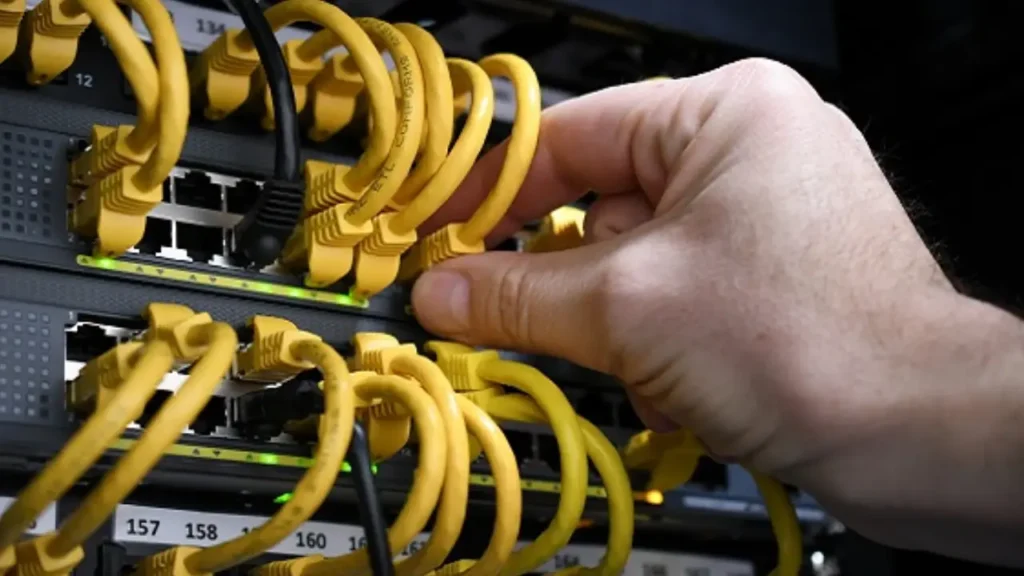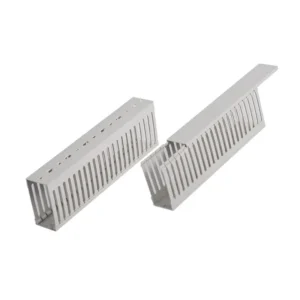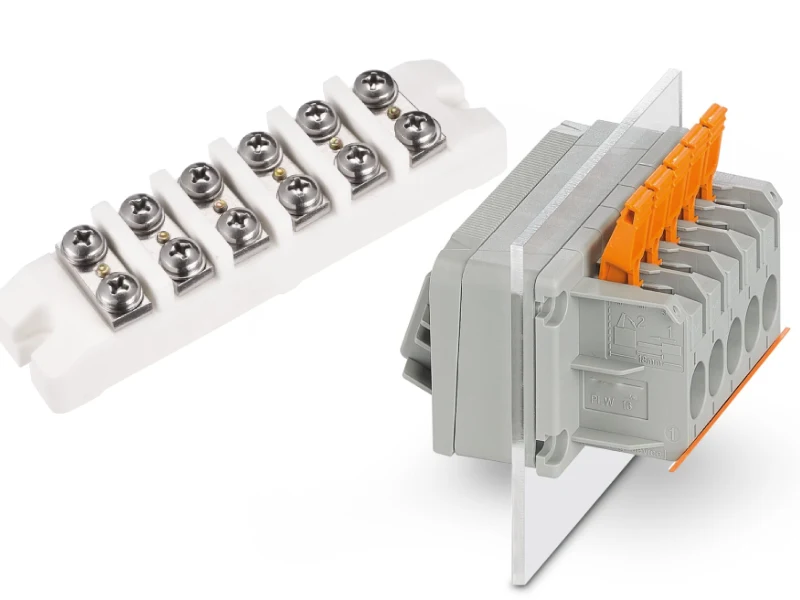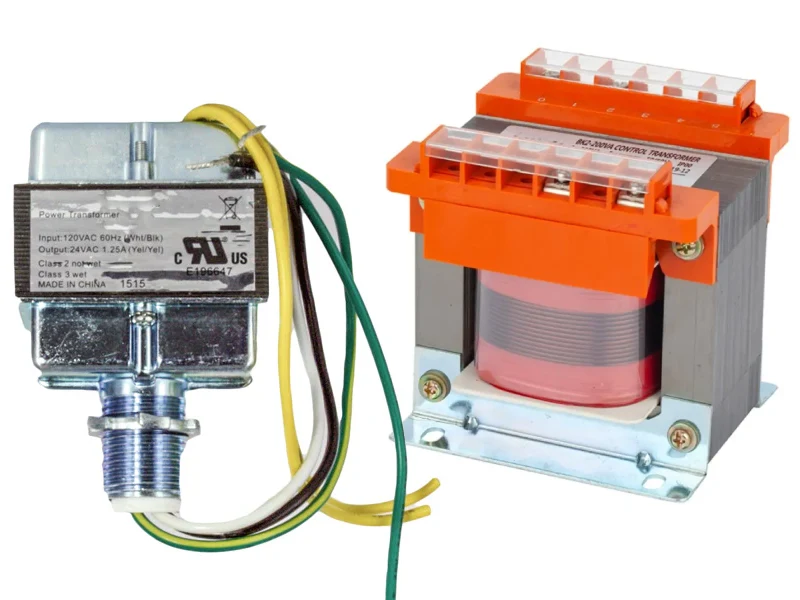In today’s interconnected world, efficient cable management is no longer just a best practice—it’s a critical necessity for safety, functionality, and aesthetics across all environments, from homes to industrial complexes. As technology advances and the number of devices multiplies, the complexity of wiring infrastructures grows exponentially.
This ultimate guide to cable management will demystify the art and science of organizing, protecting, and routing electrical and data cables. We’ll explore various systems like cable trunking and trays, delve into their benefits, and provide insights to help you achieve a streamlined, safe, and easily maintainable cabling setup in 2025 and beyond.
What is Cable Management

Cable management, or cable management system refers to the organized routing, securing, and protection of electrical, data, and communication cables within a building, facility, or system. Its primary goal is to enhance safety by preventing hazards like tripping or electrocution, improve system performance by reducing electromagnetic interference and ensuring proper airflow, and facilitate maintenance and upgrades by keeping wiring tidy and easily identifiable.
Effective cable management involves utilizing various tools and systems like cable trays, trunking, conduits, ties, and raceways to achieve an efficient, organized, and reliable cabling infrastructure.
What Do You Need for Cable Management?
Recommended Cable Management
Effective cable management requires a combination of planning, appropriate tools, and specialized systems to achieve an organized, safe, and efficient wiring infrastructure. The specific items needed will depend on the scale and complexity of the installation, as well as the environment in which the cables are being routed.
Key requirements for cable management include:
- Cable Trays: Open structures for supporting and routing large volumes of cables, especially where ventilation and easy access are important.
- Cable Trunking (Raceways): Enclosed conduits that protect and conceal cables, ideal for aesthetic purposes and environments requiring high protection from dust or physical damage.
- Conduits: Rigid or flexible tubes, typically made of metal or plastic, used to protect and route individual or small bundles of cables, often within walls or underground.
- Cable Ties/Velcro Straps: Essential for bundling and securing cables neatly together, preventing tangles and maintaining organization.
- Cable Clips/Clamps: Used to fasten cables securely to surfaces, ensuring they remain in place along their designated route.
- Cable Labels/Markers: Critical for identifying individual cables or bundles, simplifying troubleshooting, maintenance, and future modifications.
- Grommets: Protective rings inserted into holes through which cables pass, preventing abrasion and damage to the cable insulation.
- Wire Strippers & Cutters: Basic tools for preparing cable ends for termination and for cutting cable lengths as needed.
- Measuring Tape: For accurately planning and measuring cable runs and system component lengths.
- Safety Gear: Gloves, safety glasses, and other PPE as required by the installation environment and tasks.
Importance of Cable Management
Effective cable management is a cornerstone of any well-designed electrical or data infrastructure. It goes beyond mere aesthetics, directly impacting safety, operational efficiency, and the longevity of your systems.
Enhances Safety
Proper cable management significantly reduces the risk of electrical hazards such as tripping, electrocution, and fire. By securing and protecting cables within designated pathways, it minimizes wear and tear, prevents accidental damage, and ensures that live wires are not exposed, creating a safer environment for occupants and maintenance personnel.
Improves System Performance
Disorganized cables can lead to signal interference, heat buildup, and reduced data transmission speeds. Effective cable management ensures proper spacing, airflow, and protection from electromagnetic interference, thereby optimizing the performance and reliability of electrical, data, and communication networks, preventing costly downtime and disruptions.
Facilitates Maintenance and Upgrades
When cables are neatly organized, clearly labeled, and easily accessible, troubleshooting becomes much simpler and quicker. This streamlined approach allows technicians to identify and address issues efficiently, reducing repair times and making future system expansions, upgrades, or reconfigurations far more straightforward and less labor-intensive.
Extends Equipment Lifespan
Protecting cables from physical stress, sharp bends, crushing, and environmental factors like dust and moisture through proper management techniques extends their operational life. This not only safeguards the cables themselves but also the connected equipment, reducing the need for premature replacements and contributing to overall system durability and cost savings.
Enhances Professional Appearance
In visible areas, neatly managed cables contribute significantly to a professional and organized aesthetic. Eliminating tangled wires and visible clutter creates a more pleasant and efficient workspace, reflecting positively on the overall quality and attention to detail in the installation.
How to Do Cable Management?

Effective cable management transforms chaotic wiring into an organized, safe, and efficient system. It involves a systematic approach, from initial planning to ongoing maintenance, ensuring optimal performance and easy access for future modifications.
Step 1: Plan Your Layout
Begin by thoroughly planning the cable routes. Identify all devices, power sources, and network points. Map out the most direct and efficient pathways for cables, considering both current needs and potential future expansions. This initial planning minimizes cable length and complexity.
During this phase, assess the environment for any potential hazards like heat sources, moisture, or heavy traffic. Determine the appropriate cable management solutions—like trunking for protection or trays for ventilation—based on these environmental factors and the types of cables being used.
Step 2: Gather Your Tools and Materials
Before starting, ensure you have all necessary cable management tools and materials. This includes appropriate cable trays, trunking, conduits, cable ties, velcro straps, labels, cutters, and measuring tape. Having everything ready streamlines the process and ensures a professional finish.
Select high-quality materials that are suitable for your specific application. For instance, choose fire-rated trunking for safety in certain environments, or corrosion-resistant trays for outdoor use. Proper material selection contributes significantly to the longevity and reliability of your cable management system.
Step 3: Install Management Systems
Begin installing your chosen cable management systems, whether it’s mounting cable trays along walls or ceilings, or securing trunking pathways. Follow manufacturer guidelines for proper installation, ensuring all components are level, securely fastened, and aligned correctly to support the cables effectively.
Pay attention to bends and junctions, using appropriate fittings to maintain cable integrity and prevent sharp angles that could damage insulation. Ensure there’s enough space within the chosen system to accommodate all cables without overcrowding, allowing for proper airflow and future additions.
Step 4: Route and Secure Cables
Carefully route the cables through the installed management systems. Avoid tangling and crossing cables unnecessarily. Use cable ties or velcro straps to bundle cables neatly together within the trays or trunking, ensuring they are secure but not overtightened, which could cause damage.
Separate different types of cables (e.g., power from data) to minimize electromagnetic interference (EMI). Maintain service loops where appropriate, providing slack for future adjustments or repairs. This methodical routing is key to an organized and efficient system.
Step 5: Label and Document
Once cables are routed and secured, clearly label each cable at both ends. Use distinct, durable labels that are easy to read. This step is critical for quick identification during troubleshooting, maintenance, or upgrades, significantly reducing diagnostic time and potential errors.
Finally, document your cable management layout. Create diagrams or schematics detailing cable routes, connections, and labeling conventions. This documentation serves as an invaluable reference for future modifications, ensuring consistent and efficient management of your cabling infrastructure over time.
Considerations about Cable Management
Effective cable management requires careful consideration of several key factors to ensure safety, efficiency, and longevity of the electrical or data infrastructure. Beyond simply neatening wires, it involves strategic planning that impacts performance, maintenance, and future scalability.
Key considerations include:
- Safety Standards and Regulations: Adhering to local and international electrical codes and safety regulations (e.g., NFPA 70, IEC standards) is paramount to prevent electrical hazards like short circuits, fires, and electric shock.
- Cable Type and Volume: Different cable types (power, data, fiber optic) have varying requirements for bending radius, heat dissipation, and separation to prevent interference. The volume of cables will dictate the size and type of management system (e.g., large trays for many cables, smaller trunking for fewer).
- Environment and Conditions: The operating environment (e.g., indoor/outdoor, industrial/office, hot/cold, dusty/clean, corrosive) dictates the choice of materials (e.g., galvanized steel for outdoors, PVC for indoors, stainless steel for corrosive environments) and protection levels.
- Accessibility and Maintainability: How easily can cables be accessed for troubleshooting, repair, or future upgrades? Open systems like trays offer high accessibility, while enclosed systems like trunking provide more protection but less immediate access.
- Heat Dissipation: Densely packed cables, especially power cables, can generate significant heat. Adequate ventilation within the management system (e.g., perforated trays) is crucial to prevent overheating, which can degrade cable insulation and reduce lifespan.
- Aesthetics and Space Constraints: In visible areas, the appearance of cable management is important, often leading to the choice of discreet trunking or in-floor solutions. Available physical space will also dictate the size and type of pathways that can be installed.
- Future Scalability: Anticipating future growth or changes in cable requirements is vital. Choosing a system with sufficient spare capacity prevents costly re-installation and disruption when new cables need to be added.
- Budget and Cost-Effectiveness: While initial cost is a factor, consider the long-term cost-effectiveness, including installation labor, maintenance ease, and potential savings from preventing cable damage or system downtime.
Conclusion
Effective cable management is undeniably crucial for any modern electrical installation, extending far beyond mere aesthetics. By implementing proper strategies—whether through the use of cable trunking, cable trays, or other specialized solutions—you ensure system reliability, enhance safety by mitigating hazards, and simplify future maintenance and upgrades.
Ultimately, investing in robust cable management practices safeguards your infrastructure, optimizes performance, and contributes to a safer, more organized, and visually appealing environment. It’s a fundamental aspect of efficient design, preventing costly downtime and prolonging the lifespan of your electrical components.
For all your cable management needs, including wholesale cable trunking and trays, consider sourcing from Linkwell Electrics. They offer a comprehensive range of solutions to ensure your electrical systems are well-organized, protected, and compliant with the highest standards.






